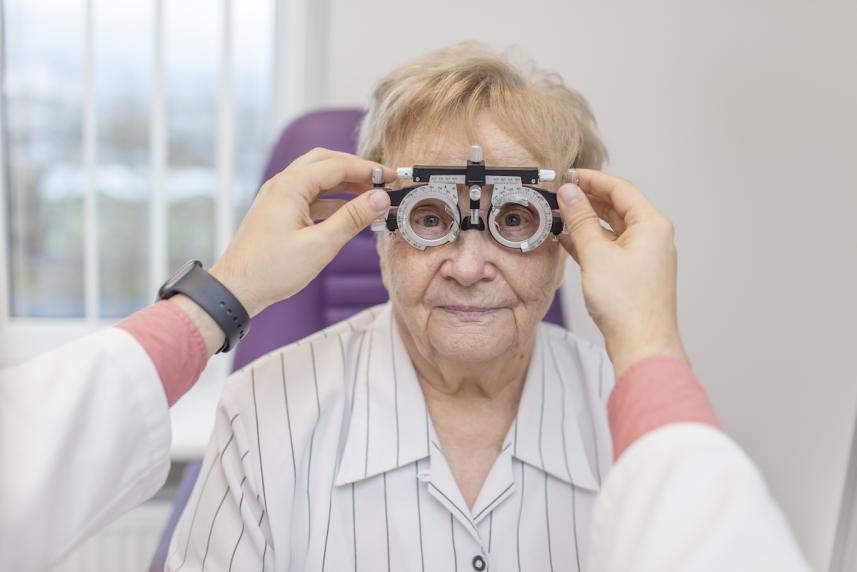Why it’s important to get your eyes checked regularly with diabetes
Getting your eyes checked often can help doctors detect serious eye issues early, when they're easier to treat.

People who have diabetes are more likely to develop eye complications. This is because persistently high blood glucose can damage your eyes, causing conditions like blurred vision, cataracts, glaucoma, diabetic macular edema, and diabetic retinopathy. “Many people don’t realize it, but diabetes affects the whole body, including the eyes,” says Michael Bryan, M.D., an endocrinologist at Holy Cross Hospital in Maryland.
Some eye problems are easy to treat if detected early, but others can cause vision loss—even when there are no symptoms. The good news is that you can take steps to keep your eyes healthy by making sure you have an annual dilated eye exam. Here are three reasons why it is important to get your eyes checked regularly.
Diabetic Retinopathy is Only Diagnosed by an Eye Exam
Retinopathy is damage to the retina, a layer in the back of the eye that's main function is to help you see light properly. “The damage to the [retina’s] blood vessels is due to the elevated levels of high blood sugar in the blood,” Dr. Bryan says.
Between 40 and 45 percent of Americans diagnosed with diabetes have some stage of retinopathy. The longer you have diabetes, the more likely you are to develop the condition. Often, in the early stages of diabetic retinopathy, there are no symptoms or only mild ones. However, if left untreated, the vessels build up fluid in the eye, which could cause diabetic macular edema to develop, leading to vision loss or even blindness.
You Have a 40 Percent Higher Chance of Developing Glaucoma
People with diabetes are at risk for a specific type of glaucoma. Neovascular glaucoma, a particularly severe and rare form, is typically associated with diabetes.
Glaucoma starts when there is a buildup of fluid in the front of the eye. Abnormal blood vessels begin to grow on the iris, blocking the normal flow of fluid out of the eye. The high pressure of the fluid damages the eye’s optic nerve, ultimately resulting in vision loss.
Most people are not aware that they have the condition until there is some loss of peripheral vision. Even then, the change in vision may be so minimal that people do not seek medical help until permanent damage has occurred.
Cataract Risk is Five Times Higher with Diabetes
A cataract is a cloud over the lens of the eye. Although cataracts are usually more common in older adults, Dr. Bryan has seen them develop in patients in their 20s. “With diabetes, you’re getting a constant change and fluctuation of the lens because of the drawing of fluid in and out of the lens due to high blood sugars,” he says. Once developed, the cataract may increase in size, and vision may become duller or blurrier, until surgery is needed.
6 Steps to Help Prevent Diabetic Eye Diseases
In addition to having an annual eye exam, Don Bryan, an optometrist at Innovative Vision and Wellness in Florida, explains what else you can do to protect your eyesight.
Control your blood sugar. This is the number one thing you need to do if you’re diabetic, since high blood sugar increases the risk of eye problems.
Maintain healthy blood pressure and cholesterol levels. Elevated blood pressure and high levels of cholesterol can also increase your risk of eye diseases.
Take your medications consistently. Always take the full dose that your physician prescribes.
Get physically active. Exercise can have a big impact on blood glucose levels, so regular exercise is very important.
Watch what you eat. Read the labels and take note of which foods have a high glycemic index.
Refrain from smoking. Smoking increases your risk of eye problems, and it makes managing diabetes more difficult overall.


